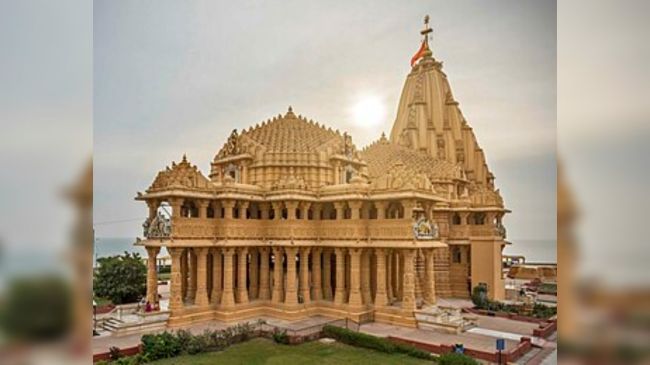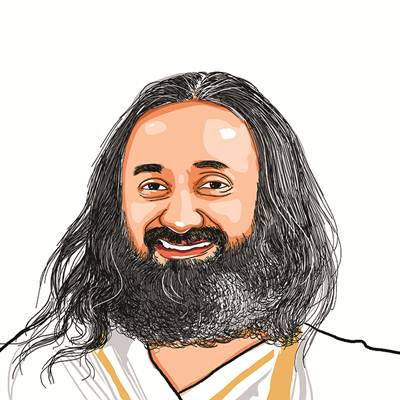Opinion The many faces of Shiva – and the return of the Somnath Shivalinga
A sharp, focused mind is needed to decode spiritual allegories. Shiva was not a historical figure who lived 15,000 years ago, sitting on a rock and weeping in ecstasy. Shiva is the cosmic principle, the divine energy that exists within every living being
 A sharp, focused mind is needed to decode these spiritual allegories. Shiva was not a historical figure who lived 15,000 years ago, sitting on a rock and weeping in ecstasy. Shiva is the cosmic principle, the divine energy that exists within every living being. (Wikipedia)
A sharp, focused mind is needed to decode these spiritual allegories. Shiva was not a historical figure who lived 15,000 years ago, sitting on a rock and weeping in ecstasy. Shiva is the cosmic principle, the divine energy that exists within every living being. (Wikipedia) The Vedas and Puranas have always catered to people from all sections of society, accommodating diverse intellectual and spiritual viewpoints. They address the depths of human consciousness while providing practical guidance for everyday life.
When it comes to Lord Shiva, there is a Vedantic view and a Puranic depiction. Shaivism does not perceive Shiva as a person but rather as a fundamental reality, or tattva. It classifies existence into 36 principles (tattvas), Earth being the first and Shiva as the 36th and ultimate principle.
Shiva is often seen as Chaitanya — pure consciousness — because, as a direct experience, Shiva is the formless, all-pervading awareness that underlies existence itself. He is Chidakasa — the infinite space of consciousness. He embodies both saguna (with attributes) and nirguna (beyond all attributes), transcending form and formlessness.
According to a well-known Puranic story, Shiva appeared as an infinite pillar of light. Neither his head nor his feet could be seen, symbolising that he has no beginning or end. Brahma ascended in search of Shiva’s head while Vishnu descended to seek his feet, yet both remained beyond reach.
There are also stories that depict Shiva’s anger, such as his confrontation with Daksha or the opening of his third eye to destroy Kamadeva. These are symbolic narratives conveying deeper truths about existence. No intelligent seeker should take these stories as literal occurrences; instead, they must look beyond the surface to grasp timeless wisdom about the nature of life and consciousness.
A sharp, focused mind is needed to decode these spiritual allegories. Shiva was not a historical figure who lived 15,000 years ago, sitting on a rock and weeping in ecstasy. Shiva is the cosmic principle, the divine energy that exists within every living being. Every emotion is an expression of his divine nature. They are not separate from him but manifestations of the infinite consciousness, reflecting the dynamic play of existence. Shakti is the dynamic energy that is inseparable from Shiva.
Each Puranic story, when explored deeply, unveils secrets and truths about existence, the universe, and one’s own life. Shiva is aja (never born), anadi (without beginning), and ananta (without end). Another name for Shiva is Sadyojata, which signifies the spontaneity and ever-new nature of existence.
Shiva is always worshipped in the form of a linga, not as an endpoint but as a gateway to transcendence. The linga represents the beginning of the four stages of spiritual realisation. The first stage, sannidhya, is feeling the presence. The second, samipya, is a sense of closeness with the divine. Sarupya is when one begins to embody divinity. Finally, sayujya is the ultimate state, the complete merger and realisation of oneness with the divine.
Among the 12 Jyotirlingas in India, from the Himalayas to Rameshwaram and Baidyanath to Gujarat, the first is the Somnath Jyotirlinga in Saurashtra. Ancient scriptures describe the Somnath Shivalinga as extraordinary as it never touched the ground, suspended in mid-air and defying gravity. In 1026 AD, Muhammad Ghazni came to India and was mesmerised by the levitating Jyotirlinga, plundered the temple and shattered the Shivalinga into pieces. It was believed that these pieces were lost forever. However, a lineage of Agnihotri Brahmins secretly preserved some fragments, carried them from Saurashtra to Tamil Nadu and made smaller lingams. For centuries, they continued to worship them in secrecy, with reverence and adherence to the scriptures.
A hundred years ago, when the Shankaracharya of Kanchi Peetham was approached by this family, he instructed, “Keep it hidden and after 100 years, take it to a saint in Bangalore named Shankara.” Following these instructions, the original Somnath Shivalingas have now been brought to me. These Shivalingas exhibit unique magnetism. Unlike typical magnetic stones, their field is concentrated at the centre, with minimal iron content.
Now, the original Somnath Jyotirlinga can return home after one thousand years. This is a moment of spiritual awakening for our nation. Before its consecration, the Somnath Jyotirlinga will be taken across India, from Rameshwaram to all 12 Jyotirlingas, offering devotees the chance to seek blessings. A
40-day purification ritual known as kalakarshan will be performed following Shaiva Agama traditions, before the final consecrtion.
The return of the Somnath Jyotirlinga is a reminder that truth and divinity can never truly be lost. Devotees will have the opportunity to receive darshan and blessings of the Somnath Jyotirlinga at the Maha Shivratri celebrations at our ashram in Bengaluru.
This Maha Shivaratri tap into the powerful cosmic energies of this night to transcend the world of duality. Om Namah Shivaya.
The writer is a spiritual leader and founder of The Art of Living Foundation




